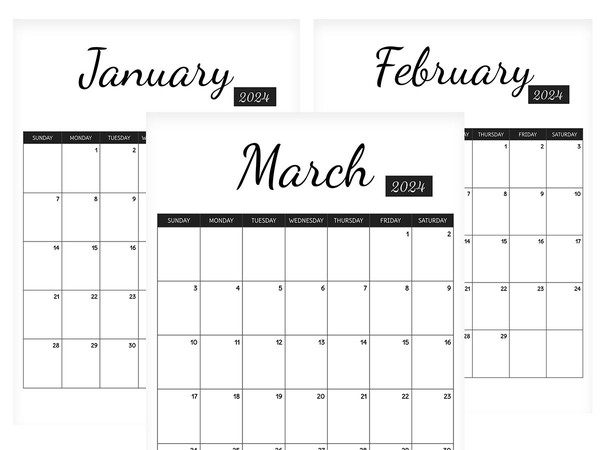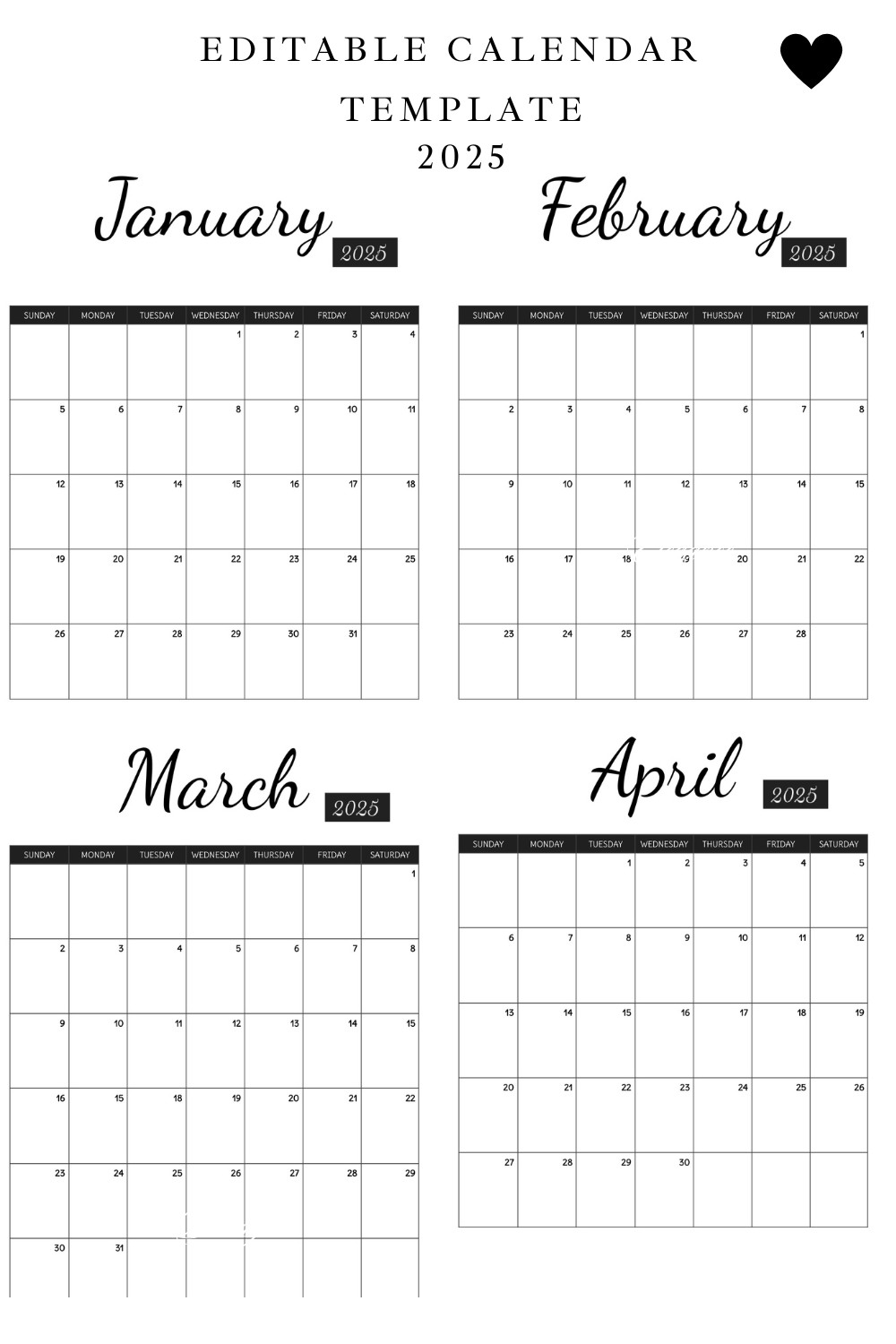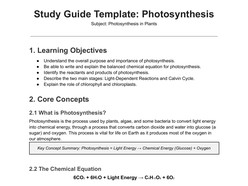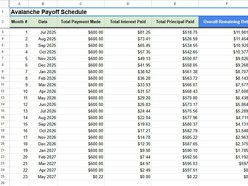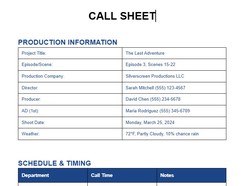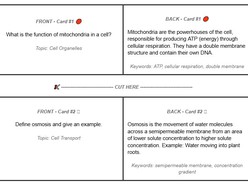Why Minimalist Tools Still Matter in a Busy Digital Age
In an era defined by a relentless influx of apps, alerts, and interfaces, the appeal of a minimalist paper calendar — especially one editable in a familiar tool like Google Docs — remains strong. While digital calendars serve real-time, automated scheduling needs, static printable calendars still offer key advantages for planning, clarity, and mental space.
This guide aims to provide an in-depth analysis and usage framework for the minimalist Google Docs calendar template for 2025, helping users get the most out of it through customization and contextual application. Whether you're managing a family schedule, personal goals, or professional milestones, a well-designed calendar can still be a game-changer.
Core Principles of a Minimalist Calendar Design
Minimalism in design, especially as applied to planning tools, hinges on removing non-essential elements. The goal is not only aesthetic clarity but cognitive efficiency — users should be able to process, prioritize, and update information at a glance.
Key traits include:
Monochrome or limited color use to reduce visual clutter.
Grid-based, consistent structure for ease of reading.
Editable fields instead of preset, limiting prompts.
Flexible month-by-month navigation instead of overloaded year-overviews.
These design principles align with findings in visual cognition research, where simpler layouts enable faster task-switching and lower error rates in planning.
Why a Printable Google Docs Calendar is Still Relevant
Even in 2025, physical or semi-static digital calendars serve use cases that dynamic apps can't:
a. Better Mental Encoding via Writing
Writing down events improves memory consolidation, particularly for strategic or high-priority goals. It's a key practice in goal-setting systems like OKRs and Bullet Journaling.
b. Increased Visibility and Spatial Awareness
Wall calendars or printed versions placed in frequently visited physical spaces (e.g., home offices, kitchens) enhance passive awareness. The layout supports holistic planning better than scrolling digital views.
c. Reduced Notification Fatigue
Unlike app-based planners, printable calendars don't add to notification overload, offering a distraction-free overview of upcoming tasks.
d. Easier Customization Without Platform Lock-In
Google Docs offers a level of format control (fonts, colors, cells) that many app-based tools restrict. The result is a document that feels personally tailored and usable across devices.
Template Overview: What's Included
Download Google Docs Calendar Template | PDF Version
The template, accessible viathis Google Docs link, includes the following:
A full 12-month view for 2025, each month on a separate page
A black-and-white design suitable for both grayscale printing and digital annotation
Editable text fields for dates, tasks, and labels
Printable in standard A4/Letter sizes
An alternative downloadable PDF version for direct printing
Detailed Customization Guide (Step-by-Step)
To get real utility from the calendar, customization is key. Here's a comprehensive, user-friendly process:
Step 1: Duplicate and Access the File
Click on the provided Google Docs link
Select 'Use Template' to save it to your Drive
Step 2: Adjust for Regional and Personal Holidays
Insert national holidays, birthdays, and recurring personal events using color-coding or tags (e.g.,
#Family,#Work)Consider adding calendar week numbers if relevant for work
Step 3: Add Monthly Goals or Focus Areas
At the top or bottom margin of each month, insert a textbox for a single-line focus (e.g., "Major Project Deadline", "Q1 Goal Review")
Step 4: Customize Visuals for Priority Mapping
Use different font weights (bold for work, italic for personal)
Add subtle background fills (gray shades) to highlight deadlines
Step 5: Print or Share
For printing: Export as PDF using
File > Download > PDF DocumentFor sharing: Use
Share > Get linkto collaborate with family or teams
Use Case Scenarios (With Contextual Advice)
a. Personal Planning: Habit Building and Time Management
Use the calendar to mark habit streaks (e.g., daily workouts, reading goals)
Monthly overviews are ideal for tracking consistency and visualizing slippage
b. Family Scheduling
Assign color codes to each family member
Use printed versions on the fridge or hallway to consolidate everyone's commitments
c. Academic Tracking (For Students and Teachers)
Great for course schedules, exam tracking, or assignment mapping
Teachers can print blank templates to distribute during syllabus planning
d. Work and Project Management
Individual professionals can track deliverables across months
Freelancers or consultants can use it as a billable milestone tracker
Add links to shared docs or project folders directly into Google Docs cells
e. Content Planning (Writers, Marketers, Educators)
Outline publication or campaign schedules
Link to content briefs or email templates
Use conditional formatting (via Google Sheets if needed) for deadlines
Advantages Over Other Calendar Tools
| Feature | Printable Template | Google Calendar | Trello/Notion Boards |
|---|---|---|---|
| Offline Usability | ✅ | ❌ | ❌ |
| Visual Simplicity | ✅ | ❌ | ❌ |
| Print-Readiness | ✅ | ❌ | ❌ |
| Full Control of Layout | ✅ | ❌ | Partial |
| No Learning Curve | ✅ | ❌ | ❌ |
While digital solutions offer real-time integrations, for strategic planning and periodic reviews, simple tools often outperform apps due to lower distraction, cognitive load, and friction.
Additional Resources
When and Why to Choose Static Calendars
While smart calendars integrate across email, meetings, and devices, they often lack the clarity and commitment that comes from writing and visualizing. For users who want full control, minimal distractions, and physical presence, tools like this minimalist calendar template provide enduring value.
Professionals who conduct quarterly reviews, families with shared plans, and students managing workload can benefit from adding a static calendar into their toolkit.
